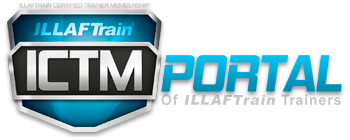Train of Trainers - Advanced
Course id: TOT2
Duration: 4 Days
introduction
This program works on experienced trainers, in order for them to master their skills in presentation and exercising; and you will learn what the expert trainers do to create the perfect learning environment, increase healthy competition, use imagination, transfer the skills to the workplace, increase pleasure in classroom, deal with difficult learners, etc…
Prerequisites
No
Audience
This program is directed at trainers, instructors, facilitators, persons who previously attended courses for train of trainers and who want to develop their training skills and enhance them, learn how to become learning facilitators and master their own presentation skills, and persons who attended the first level of Train of Trainers (TOT1).
Objectives
At the end of this training program, each learner will be able to:
- Use learning contracts.
- Use similes and metaphors.
- Write the learning objectives using Bloom's Taxonomy.
- Develop activities and exercises using Accelerated Learning techniques.
- Support the practice of new skills by learners.
- Distinguish among the components of vocal diction.
- Distinguish among the components of body language.
- Distinguish between the responsibilities of the moral speaker and the listener.
- Develop gestures.
- Motivate the learners.
- Develop distinctive friendly relations with learners.
- Create a learning process full of fun.
- Create a healthy learning environment.
- Make the course enjoyable for learners.
- Analyze his learning style according to Kolb.
- Modify his learning style when necessary.
- Distinguish between the basic capacities of each learning style.
- Strengthen the learning styles skills.
- Handle the tension resulting from work and prevent fatigue.
- Keep the group in a healthy state.
- Lead the groups and their discussions skillfully.
- Interpret the non-verbal messages.
- Employ non-verbal expressions techniques.
- Run dialogues with learners.
- Deal with resistance.
- Prevent the emergence of problems.
- Deal with difficult learners.
Content
Learning Process
How to connect the learner with learning before the beginning of the program.
The items that must be included in the learning contract.
16 classifications that help you write the learning objective professionally.
Twelve advanced techniques to deliver lectures smoothly.
The use of similes and metaphors in learning presentations.
The three components of the exercising phase.
Ten essential tips to enhance healthy competition in class.
Components of the integration phase.
Twelve basic points to enhance the use of the new skills at work.
How to help learners write a work plan to enhance learning.
Three steps to organize an influential conclusion.
Presentation
The seven responsibilities of the moral speaker.
Changing your voice effect to enhance the meaning of your message.
Using gestures to enhance the message.
Familiarity
How you build exceptional familiarity with learners and maintain it.
Eight main reasons for the courses’ failure.
Four basic factors to motivate learners.
More than twenty techniques to help motivate learners.
The most important tips to prevent boredom in class.
How to create an environment full of fun.
Secrets to developing influential learning frameworks.
How to meet the learners’ needs professionally.
Create healthy discussions among learners.
How do breaks contribute to learning.
Trainer Leader
The learners’ styles according to Kolb and how to deal with them.
The secret of flexibility in meeting learning styles.
The most important strategies needed to strengthen and develop the learning style skills.
Twenty tips to deal with the instructor’s anxiety.
The most important factors in enhancing your credibility and professionalism.
The most important techniques to deal with fatigue.
Fifteen standards for self-assessment.
Important Training Issues
The four phases of group development.
How to read the groups.
The healthy signs of learning groups.
Creating activities that motivate small groups.
Determining the groups’ verbal behavior and how to deal with it.
Interpreting non-verbal expressions.
Negative behaviors by trainees.
How to manage the dialogue with the trainees.
Negotiation skills.
Three strategies for dealing with learners’ resistance.

